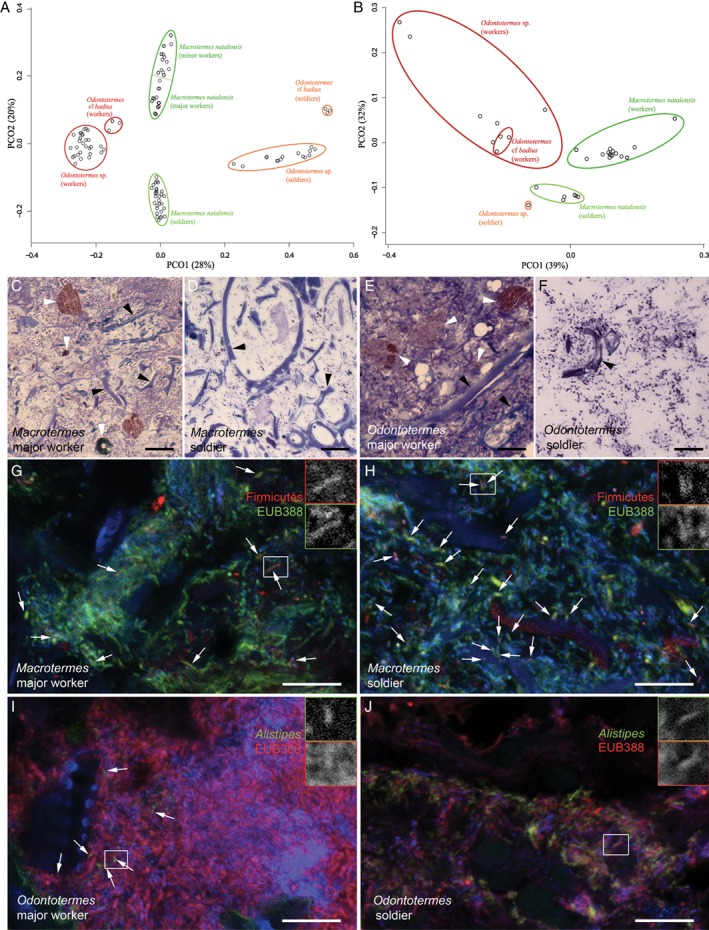Figure 2.

Structural and functional differences between gut communities of sterile castes.
A. Bacterial community similarity analysis of the 108 sterile caste gut microbiotas, visualized using principal coordinate analysis (PCoA) based on Bray–Curtis distances. p values of Bray–Curtis distances between the eclipses were tested using an AMOVA test (p < 0.001, Supporting Information Table S6).
B. PCoA of AZCL enzyme activities in different castes and ages.
C–F. Different substrates in paunches (P3 region of the hindgut) of major workers and soldiers of Macrotermes natalensis (C, D) and Odontotermes cf. badius (E, F). Fungal material marked with black arrowheads, other types of substrate indicated by white arrowheads. Light microscopy of semi‐thin sections stained with toluidine blue.
G, H. representative images of fluorescent in situ hybridisation with Firmicutes‐specific probe (red, arrows) in sections of the paunch (P3 of the hindgut) of a Macrotermes natalensis major worker (G) and soldier (H). All bacteria were stained with the domain‐specific probe EUB388 (green), DNA was stained with DAPI (blue).
I, J. Alistipes III (green, arrows in I) in sections of the paunch (P3 of the hindgut) of an O. cf. badius major worker (I) and soldier (J), all bacteria were stained red (EUB388 probe), DNA was stained with DAPI (blue). Alistipes III was abundant in soldiers of O. cf. badius (J). The inserts show overlapping staining with two probes of target bacteria at higher magnification. Scale bars are 10 μm.
